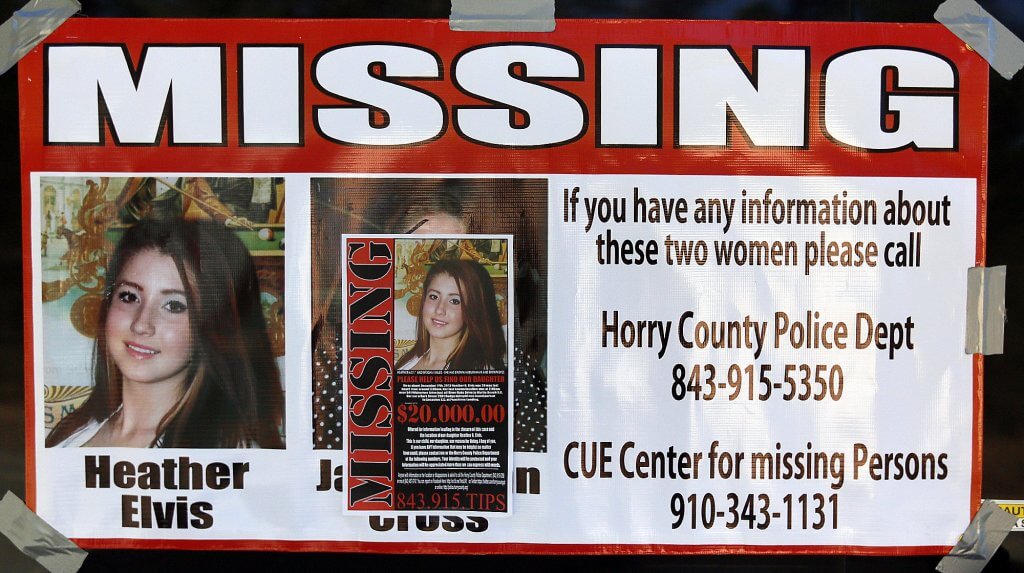
Can you have a murder case without a body?
Early the morning of Wednesday, Dec. 18, 2013, Heather Elvis, a pretty 20-year-old hostess at the Myrtle Beach theme restaurant Tilted Kilt, drove out to a remote boat launch ramp along the Intracoastal Waterway and was never heard from again.
After months of investigation, police arrived in force at the home of Sidney and Tammy Moorer and arrested the married couple with three children for investigation of murdering Heather. The motive stemmed from the fact that Sidney, a maintenance worker at the restaurant, had a sexual relationship with Heather in the fall of 2013. Later evidence suggested that Heather may have been pregnant with Sidney’s child.
As I show in my new book “Missing … And Presumed Dead,” prosecutors could prove through phone and GPS records and other evidence that Sidney spoke to Heather from a payphone just hours before she disappeared, leaving her upset, on a night when Sidney and Tammy were driving around Myrtle Beach in their pickup.
Surveillance video recorded images of a pickup that authorities would argue belonged to the Moorers driving to and from the boat landing around the time Heather went missing. And prosecutors had Sidney’s police interview in which he initially lied when he denied telephoning Heather that night.
The problem: There was no Heather Elvis.
Prosecutors had no idea what happened to her or where her body may have ended up. They didn’t even have a crime scene. Heather’s car was found at the landing, but there was no evidence of a struggle, no blood or hair or DNA. More important, authorities had no physical evidence linking either of the Moorers to the car. Their own truck had been scrubbed clean and police didn’t even bother look for DNA.
A common legal axiom used to be: no body, no crime. In researching my book, I spoke to an expert on the subject, Thomas A. “Tad” DiBiase, former federal prosecutor who has written the leading text, “No-Body Homicide Cases: A Practical Guide to Investigating, Prosecuting, and Winning Cases When the Victim Is Missing.”
For years the no body, no crime rule proved mostly true. Tracking cases dating back to the 1830s, DiBiase found only 525 of them that had gone to trial. But then then he discovered something interesting. More than half of those cases were tried in the last 19 years. What had changed?
DiBiase credits new technology. Advancements in DNA can now place a victim, and often a suspect, at a crime scene in ways never possible before. Except in the Heather Elvis case there was no evidence of a crime scene. So prosecutors used another new common tack, arguing Heather had to be dead because she stopped using her cellphone and social media. Heather was a frequent poster on Twitter, Facebook and Instagram and spoke on her cell phone constantly. That all changed the night she disappeared.

Prosecutors were prepared to argue that a digital flat line was tantamount to death.
But would the jury buy it? Or would the extensive search for Heather’s body render the problem moot? Read “Missing … And Presumed Dead” to follow the legal twists and turns that paralleled the grueling emotional roller coaster endured by Heather’s family as authorities seek justice in a dark void.




 Join our email list
Join our email list
Leave a Reply